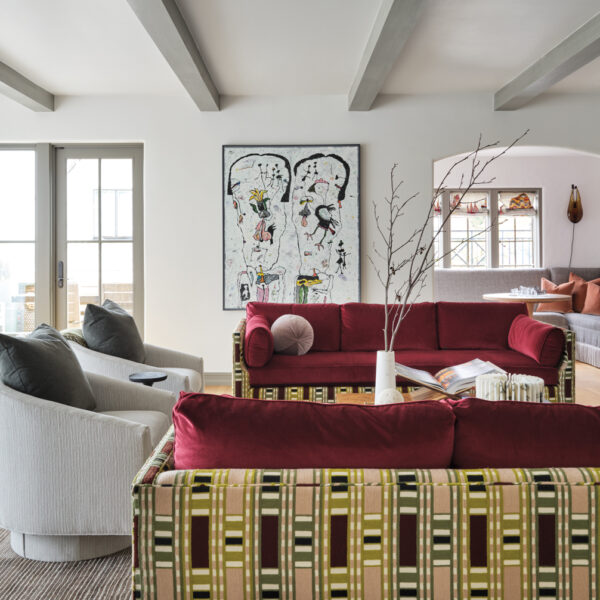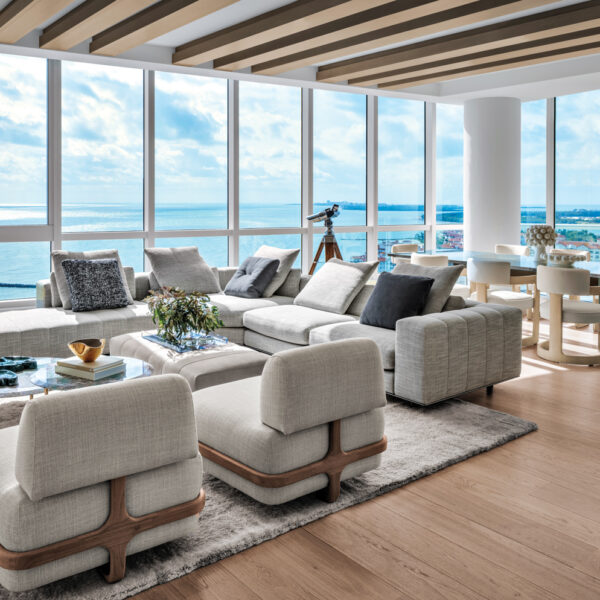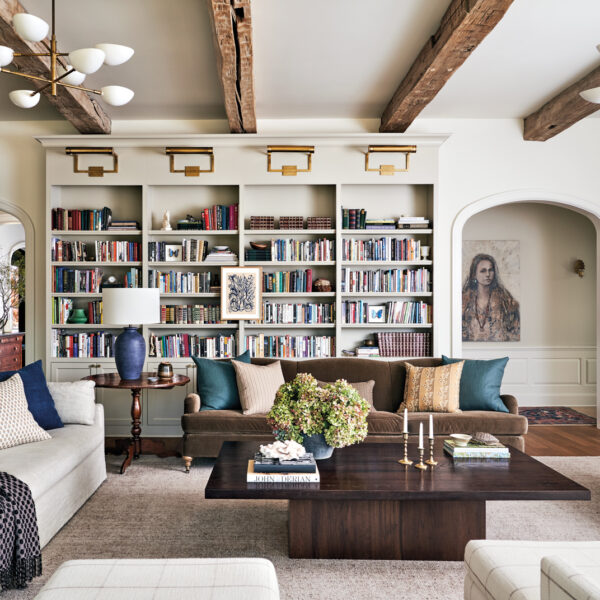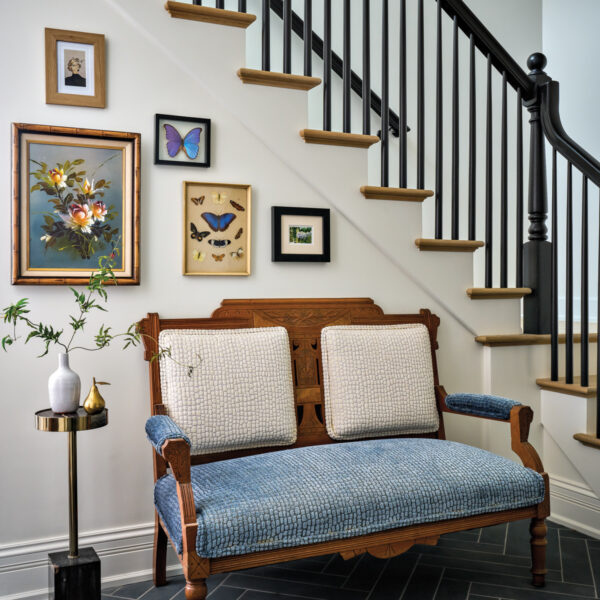Family ties, familiarity and a sense of well-being often inspire us to move back to the communities where we were raised. These thoughts came to mind for Lisa and Richard Scully when Richard was diagnosed with ALS, otherwise known as Lou Gehrig’s disease, in August 2010. “We had an old Georgian-style house in Evanston, and our two sons were in grade school,” says Lisa. “But with the diagnosis, we knew we’d need a totally different lifestyle as well as a single-story space. So we decided to move downtown, which is where I grew up and my parents still lived.”
Among the residences they considered was the unit right below her parents’ vintage co-op in Streeterville. But “it was so dark and dreary that they couldn’t imagine how to make it work—especially since it was so much smaller than their previous house,” says designer Eva Quateman, whom the couple hired to help them with the project. Their outlook changed when the designer showed them a place in the very same building that she was finishing up with her husband and business partner, Gary, a general contractor. “It was the identical unit, but a few stories higher,” says Eva.
The renovated co-op was a game changer for the Scullys. “It was so chic and smartly done that I was instantly able to imagine us living in this building,” Lisa says. “Eva mined every square inch and maximized the available daylight, which was really important to me.” Richard, whose illness was progressing much faster than the couple expected, “felt I’d be in great hands with the Quatemans doing the job,” she adds.
Decision done, the couple closed on the co-op quickly, yet Richard passed away just as they were about to start the renovation a few weeks later. Distracted at the time, but confident with her team, “I gave Eva carte blanche,” says Lisa. So, with a tight deadline, the Quatemans began demolition with their frequent collaborator, architect Anthony Hurtig.
The project required the team to update every system, window, fixture, fitting and surface in the place as well as furnish it anew. “The Scullys’ Evanston house was filled with gorgeous period antiques, but they were the wrong scale and style for their new home,” says Eva. “This space was smaller and needed updated pieces that were more streamlined.” The first order of business was to rework the layout to maximize natural light and available space. With Hurtig’s input, Eva and Gary relocated and broadened the apertures in the public areas so they lined up in enfilade, allowing light to flow more freely between rooms. They also eliminated choppy alcoves and the servant’s quarters to give the unit elegant new symmetry.
The task “was challenging,” says Gary. “This is a 100-year-old building with concrete beams and columns behind every wall, and its old-fashioned construction leaves absolutely no room for modern-day mechanicals.” Adds Hurtig, “Existing vintage surfaces had to be carefully and painstakingly chiseled and incised just enough for the installation of the up-to-date building systems.” Camouflaging all the structural deficits was yet another challenge, and so Eva came up with a strategy to make the new soffits look like graceful neoclassical coffers, which created coves and made room for recessed lighting. “Eva’s a master at squeezing every ounce of opportunity out of these vintage units,” says Hurtig.
Eva’s perceptive design strategy was also masterful. New yet classic furnishings with patrician roots but sleeker lines than their predecessors, plus an urbane color palette of black, white and gray, proved perfect for the family. “They needed a fresh start with pieces that would be composed but have enough personality to add a little kick to each room,” says Eva. “And since every single space was going to get a lot of action, each one had to hold its own in terms of function, comfort and polish.” Adds Lisa, “This doesn’t feel smaller or less significant than our old house because we really use every room, and each one is so versatile. But best of all, it feels authentic and timeless, like a home that we’ve been in all along.” And Hurtig isn’t surprised. “The better a job is, the less you can perceive what was done. Eva made the finished product look effortless.”






